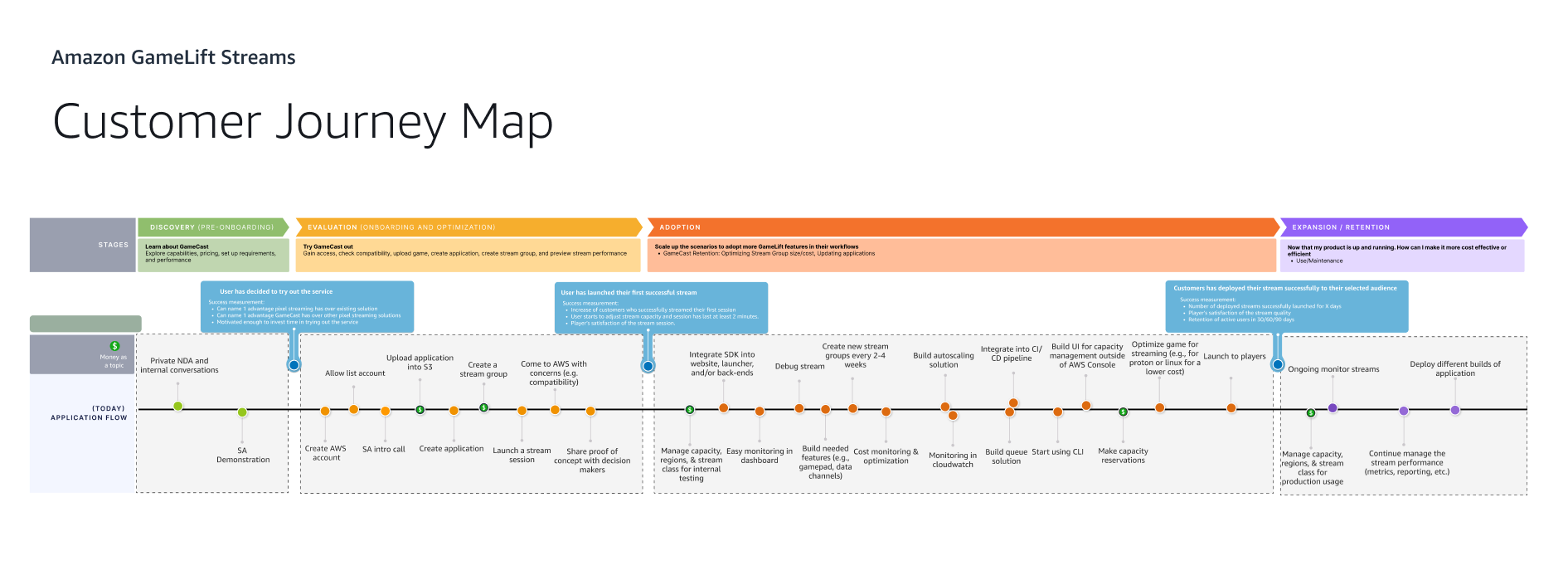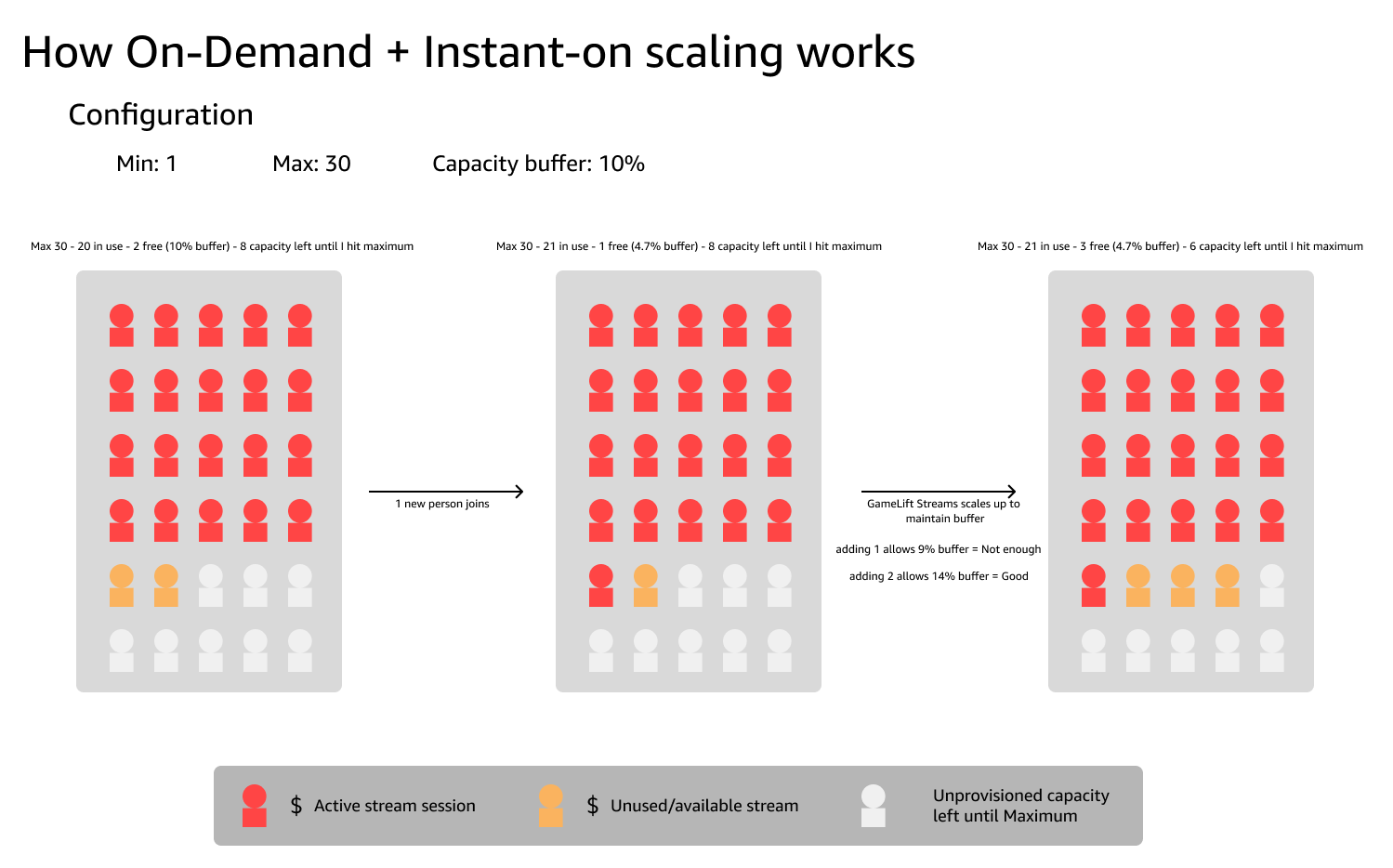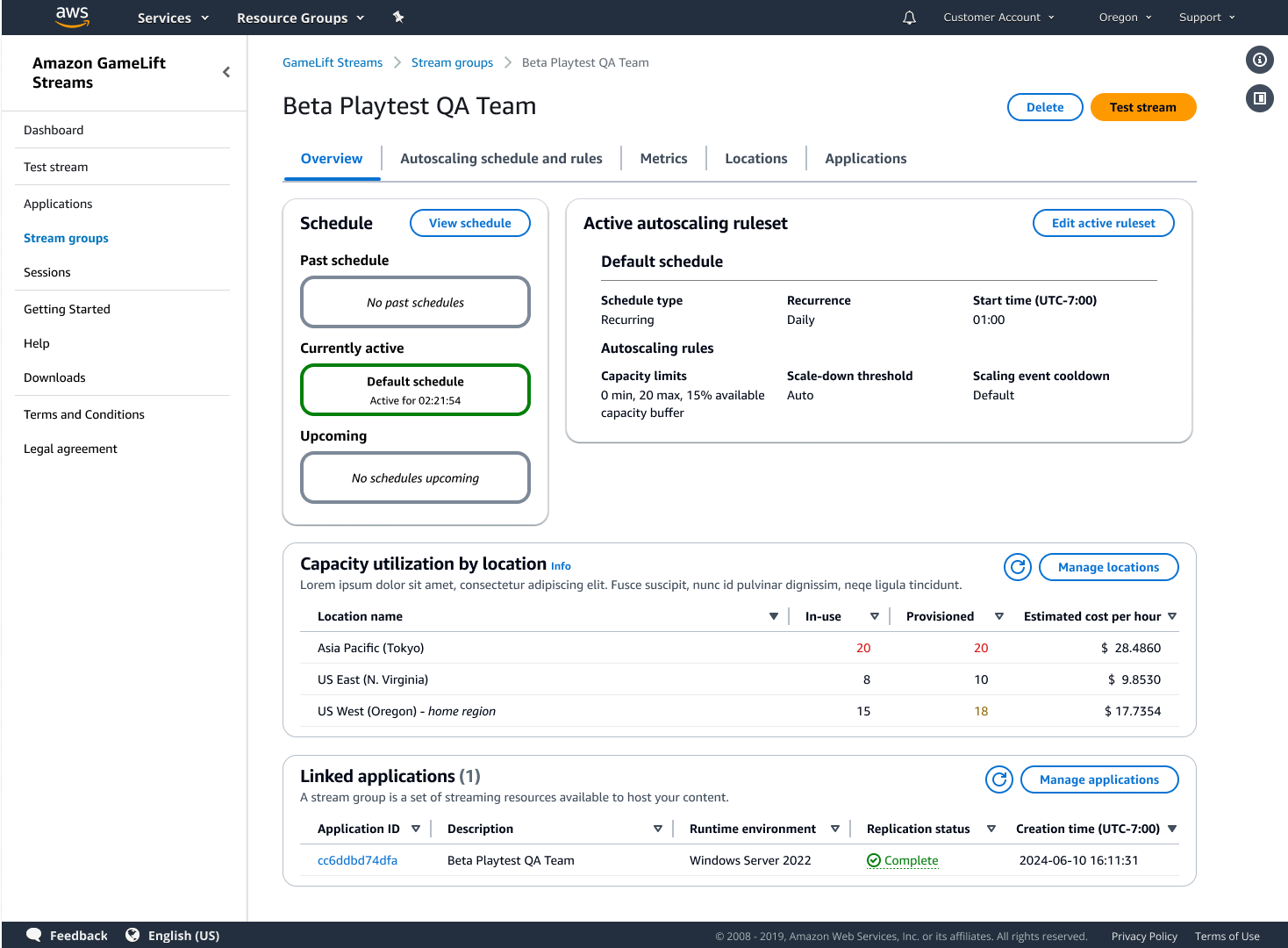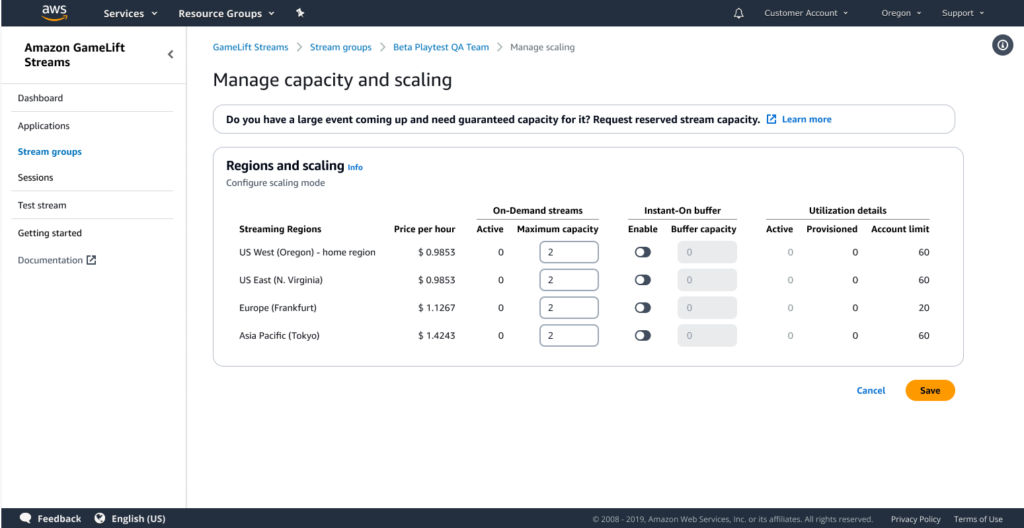Amazon GameLift Streams – Autoscaling Feature Design
About Amazon GameLift Streams
Amazon GameLift Streams allows game publishers, studios, and developers to build out their own game streaming service; deploying their games and enabling players to play them directly from the cloud in seconds on a variety of devices without needing to download the game or own powerful, and expensive, gaming hardware.
Project Overview
Role & Responsibilities
- UX Design Lead
- Product Design
- User Research
- Prototyping
- Accessibility
Platforms
AWS Service
Major Milestones
Private Launch: 2023
Public Launch: 2025
Project Overview
In late 2022, I joined the GameLift Streams team at Amazon as the design lead to help bring a new streaming service from early concept to private beta. A critical pain point surfaced early: capacity management. The initial system gave customers full manual control of capacity, but it was tedious, error-prone, and difficult to scale. My mission was to reimagine this experience by designing a simple, flexible autoscaling solution that balanced customer needs with the technical constraints of a beta-stage service.

The Problem
Customer research and feedback made one thing clear: manual capacity management was a major source of frustration. Provisioned capacity drove costs, but managing it required multiple steps, constant monitoring, and tuning with little feedback. There was no immediate confirmation that changes took effect, error states were unclear or unresolved in the UI, and misconfigurations had already led to costly overruns for customers.
While AWS provided automation tools, they required integrating with multiple services and a steep learning curve—effectively leaving customers to “build it themselves,” which was not feasible for many. Customers wanted a hands-off system that ensured enough capacity for peak usage, optimized costs, and eliminated the need for babysitting.

My Design Challenge
The initial plan was to add automation on top of the manual controls. However, this quickly proved unscalable and insufficient to meet evolving customer needs. The challenge was to design a new system that:
- Enabled hands-off autoscaling alongside manual controls.
- Worked within capacity pricing and technical constraints (e.g., only one scaling operation at a time, 5+ minute operation delays).
- Balanced simplicity and flexibility for a range of users.
- Scaled for future product roadmap developments.
- Built customer trust through clarity and transparency.
Approach
1. Discovery & Research
I started by deep-diving into customer feedback, CX benchmark data, and cross-team conversations with engineers, PMs, and solution architects. These discussions surfaced outdated assumptions and new technical opportunities, including a breakthrough from a parallel engineering effort that allowed a broader solution scope.

2. Ideation & Concept Development
I sketched multiple low-fidelity wireframes exploring concepts from fully automated “set-and-forget” modes to flexible configurations supporting thresholds, min/max limits, scheduling, and region-based controls. Through rapid iteration and stakeholder workshops, I refined a mid-fidelity prototype that simplified complex workflows into an approachable interface—easy for non-technical users but flexible enough for advanced cases.

3. Key Design Goals
- Simple to set up
- Flexible and scalable
- Configurable across regions
- Integrated cost controls and monitoring (planned for future releases)
4. Validation & Alignment
Working closely with UX Research, we validated the design through usability testing and direct customer feedback, confirming it addressed core pain points like minimizing idle capacity and reducing manual oversight. I led internal presentations to align engineering and product leadership, ensuring the roadmap supported phased delivery. The feature was designed modularly, enabling immediate value delivery while allowing iterative enhancements aligned with roadmap priorities.
A Clickable Prototype Example for User Testing


Outcome
Autoscaling launched in early 2025 with a reduced featureset as part of GameLift Streams’ public release. We achieved:
- Significant reduction in manual capacity management burden
- Simple, flexible autoscaling trusted by customers
- Support for future roadmap expansion
- Default-on usability for most customers
Customer Impacts
User testing was overwhelmingly positive—customers called it intuitive, powerful, and a key enabler for confident scaling from testing to production. Internally, the design influenced other automation features and inspired a partner service to adopt it as a blueprint for their autoscaling redesign.
